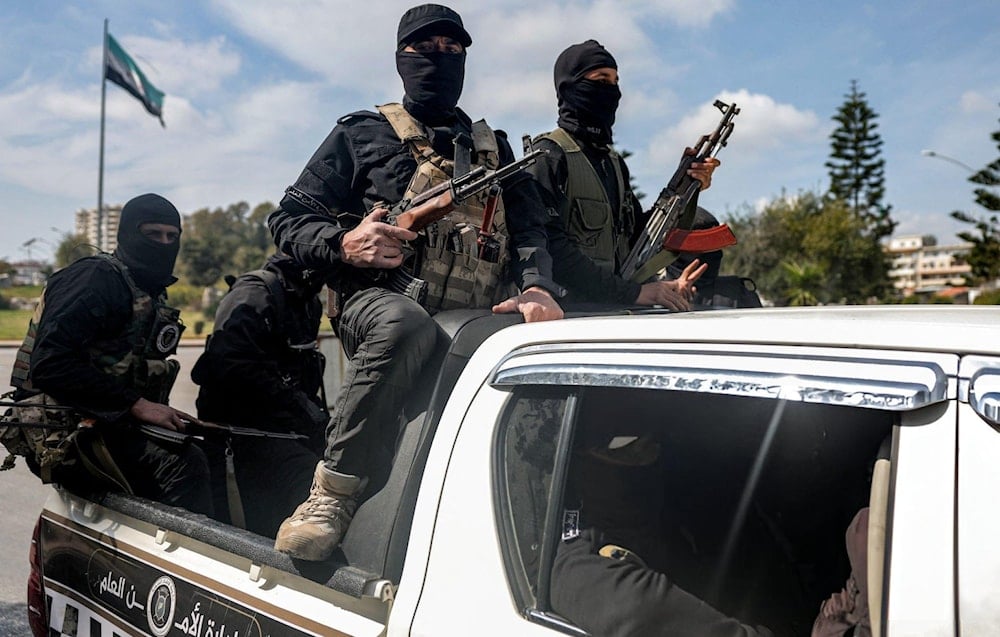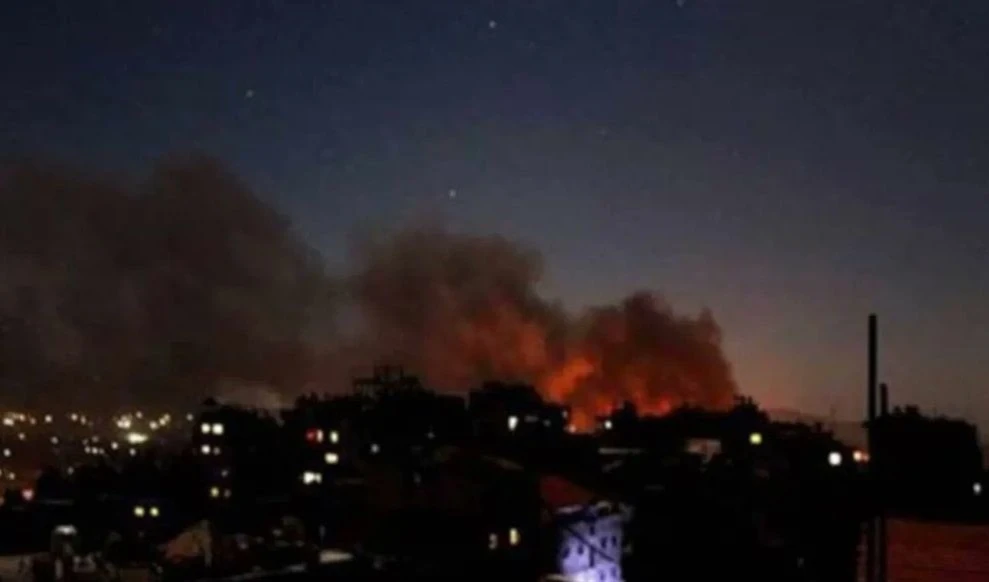Top Syrian GS, MoD officials involved in Alawite massacres: Reuters
Reuters has concluded that at least a dozen armed groups, including foreign fighters, now operating under the new government's command, were involved in the March killings.
-

Security forces loyal to the interim Syrian government ride in the back of a vehicle moving along a road in Syria's western city of Latakia on March 9, 2025 (Photo by OMAR HAJ KADOUR / AFP)
A Reuters investigation has uncovered a clear chain of command linking the March massacres of Syrian Alawites to armed factions now operating under the authority of Syria’s new government in Damascus. One faction, the 400 Division, is an elite unit of Hay'at Tahrir al-Sham (HTS).
Nearly 1,500 Alawites were killed, with dozens still missing, and at least 40 separate sites of killings, looting, and revenge attacks against the minority were documented.
Reuters found that at least a dozen armed groups, including foreign fighters, now operating under the new government's command, were involved in the March killings. Nearly half of these factions have been under international sanctions for years due to human rights violations, such as killings, kidnappings, and sexual violence.
Units of HTS were involved
Among the former Hay'at Tahrir al-Sham units implicated in the Reuters investigation are the General Security Service, the main law enforcement agency; the 400th Division, an elite unit of fighters; and the Osman Brigade.
The report stated that other armed factions that recently joined government forces, such as the Sultan Suleiman Shah Brigade and the Hamza Division, were also involved in the killings.
Defense Ministry officials too
Mohammed al-Jassim, commander of the Sultan Suleiman Shah Brigade, told Reuters he was added to a chat group led by a top Defense Ministry official, whom he said he knew only as Abu Ahd. Abu Ahd al-Hamawi, Reuters explained, is the pseudonym of Hassan Abdel-Ghani, the Defense Ministry spokesperson.
Al-Jassim's Brigade, which is also known as Amshat, was ordered to reopen the coastal M1 highway linking Latakia and Jableh. He said his militia took up positions outside the city of Jableh.
As the massacres of Alawites unfolded, the Defense Ministry spokesman Abdel-Ghani said publicly the operation on the coast was proceeding as planned with the stated goal of keeping control of the region and “tightening the noose on the remaining elements of officers and remnants of the fallen regime,” according to SANA.
Behind the scenes, Abdel-Ghani was running the Telegram chat of militia leaders and military commanders, according to a dozen text and audio messages in an exchange between him and a senior commander from another faction, Reuters noted.
No charge made
Despite ongoing violence, including the recent killings of 20 Alawites between May and June in Latakia and Hama, no one has been charged in connection with the March atrocities. While the Syrian government has reported detaining dozens of suspects to the United Nations, it has yet to release an official death toll. The UN’s own count of 111 fatalities is believed to be a significant underestimation.
In response to the violence, President Ahmad al-Sharaa formed a committee to investigate and promote “civil peace” efforts. Committee spokesperson Yasser Farhan said findings will be delivered to the president within two weeks and cautioned Reuters against publishing its report before the official one is released, emphasizing the importance of preserving the “integrity of the truth.”

 3 Min Read
3 Min Read









